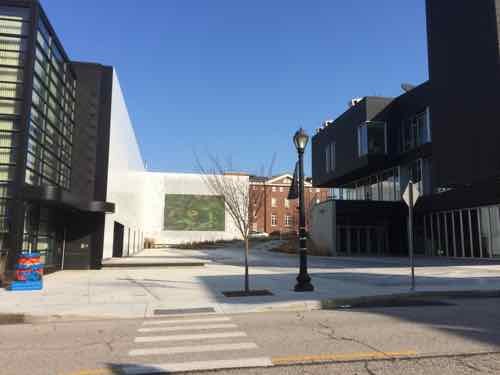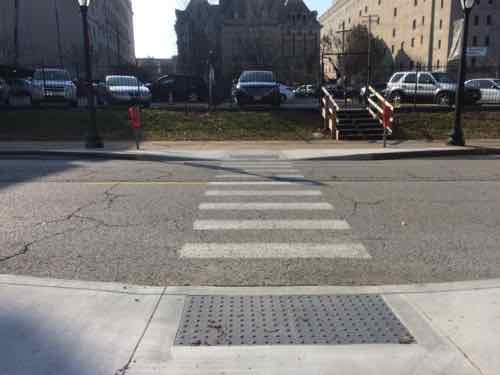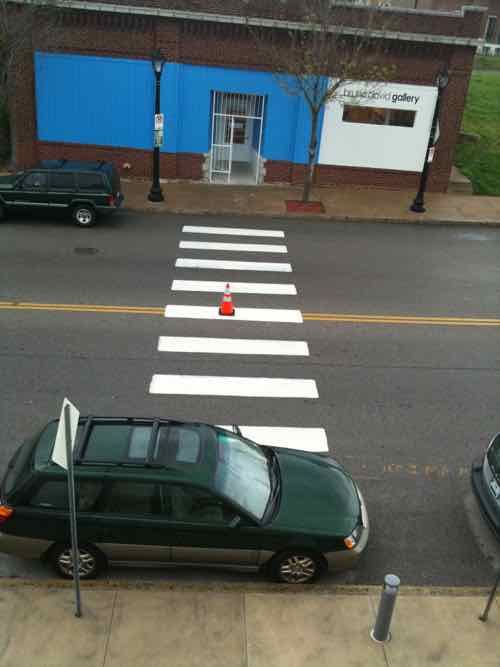Good News Friday (#GNF): Improved Pedestrian Crossing On Olive
It’s Friday so that means a post with good news. Today’s good news is that the area of Midtown known as Grand Center is beginning to implement some of the improvements from their master plan. The blocks between Grand & Spring are very long — too long. They’d painted crosswalks at midpoints years ago, but these crossing points didn’t work for those of us in wheelchairs. Even the able-bodied could face difficulties with parked cars, motorists not stopping, etc.
So last month I was happy to see a new crossing on Olive between the Nine Network (KETC) and St. Louis Public Radio (KWMU)


In April 2010, while visiting the Pulitzer, I photographed the problem in Grand Center: paint but no ADA ramps, cars able to block the crosswalk. The following was very common in Grand Center so I’m very glad to see it getting addressed!

Pushing the ramps out into the parking lane puts pedestrians where they can look both directions and where motorists can see pedestrians entering the crosswalk so they can stop to let them cross. Tomorrow will be a nice day so get out and take a walk. See you Sunday with a new poll.
— Steve Patterson
I agree it is a good thing to begin to show some attention to detail. Unfortunately the failure of urban planning in Grand Center and the rest of the City for those who use wheelchairs and just as important, those who walk, is almost universal. The real challenge is to build whole neighborhoods friendly to wheelchairs and pedestrians. For instance the whole southside of the block between Grand and Spring is parking, either garages or lots, what does that mean for wheelchairs? Which in turn raises questions about wheelchair access from the various garages and lots to the point of the street crossing.
This in addition to what are the long term projections for the block and their ramifications for wheelchairs and pedestrians to fully utilize the assets of Grand Center?
But it is positive in that it shows those in government are beginning to realize that the city must be built for people to actually use and feel comfortable doing so over fulfilling the needs of the auto.